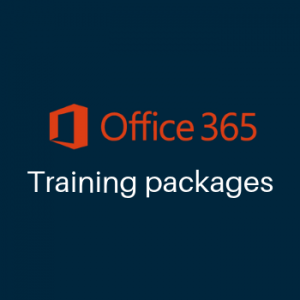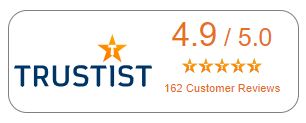Office 365 Migration
Congratulations. You’ve joined the tens of millions around the world and joined the great Office 365 migration (or you’re seriously considering it).
Office 365 has been around for a while now. And we love it. But this most multifarious of Microsoft suites is still causing confusion for many longstanding Office users.
If you found yourself keen to get going, but left staring blankly at a screen of apps you’ve never used – or even heard of – you’re not alone. As it stands, Office 365 is probably one of the most widely installed yet underused software in businesses today.
But take it from us, Office 365 has the power to really spice up your work life.
At escalla, we made our Office 365 migration quite a while ago. And we haven’t looked back. Meetings are smoother; file management is simpler; remote working is easy and productive.
We also spend a large part of our time helping others to use it. So by now, we understand what it takes to make an Office 365 migration work.
To save you time and trip-ups with your own migration, here’s 5 really important bits of advice for your move to 365.
5 tips for a successful Office 365 migration – summary:
- You need to think of Office 365 as a whole new way of working, not just an update with a few new features.
- Stretch comfort zones and get your staff using the new apps, not just core ones. Embrace these features. Your staff are more capable than you think.
- Prioritise communication. It’s easy to get stuck on the ‘what’; but your teams will keep asking ‘why’. Arm yourself with good answers.
- Start with a small group of keen users to try it out. It’ll be easier to manage. Their positivity will then infuse into the rest of your teams.
- Consider training carefully. A small investment at adoption stage will pay off massively in ongoing productivity and positivity!
1. A whole new way of working, not just an update with a few new features.
First off, don't make the mistake of assuming 365 is just the 'new version' of Office. It isn't!
Office 365 isn’t an update. It’s an upheaval.
If you’re expecting a few new features and a cool menu bar you’re in for an awakening. 365 has taken up the roots of ‘the old way of doing things’ and planted something fitting and capable for your business in 2018.
As you know, life in old Offices has followed a familiar pattern: use one program for one task; save your file to your computer; put it in an email or bang it in a folder; then pray nobody ever needs to find it (because after a week it’ll probably be buried so deep in your ‘S/P/D/X-Y-Z drive' you’ll never see it again).
But Office 365 has shifted away from traditional desk-based productivity, and adapted its suite for our remote, multi-device-driven lives. Everything is now cloud-focused, built to be accessed through multiple locations and people. All that – added to a fair few mergers between once-familiar programs – means a massive shift in the way you work.
It’s essential that you plan how your Office 365 migration will work. You can’t expect everyone to just ‘start using it’. Doing nothing will come back to haunt you.
2. Stretch comfort zones and start using the new apps and features
If you buy Office 365 and just use it for Word, Excel, PowerPoint and Outlook then you’re not getting out of first gear.
The value in this suite lies deep in the newly-developed applications. The more features you learn to use, the more you’ll get out of it.
Encourage users to do more: Teams, Stream, Delve, Sway, Forms…There’s lots to learn. But don't be scared of it. Essentially, it’s all still just Office.
Of course, it’s never easy to ask your teams to start using unfamiliar software. But the biggest hurdle many staff find to using new features is simply not knowing what to use them for. Rather than having the skills to operate them. Give your teams a convincing purpose and they’ll usually run with it.
Remember, this is 2018 not 1998. Your staff want and expect to use technology to make their lives easier. And if they don’t, the people who will soon replace them will.
3. Prioritise communication: answer the ‘why’ as well as the ‘what’
People resist change. It’s human nature. The only thing that will pull most people out of their comfort zone is clear personal benefit.
You know Office 365 will be good for your staff. But maybe they can’t see it. If not, chances are it’s because they either don’t understand 365, or they’re lacking the confidence to try.
The truth is, your staff ARE happy and comfortable with online applications. Most of them are watching YouTube with breakfast, tapping apps and messaging their other half throughout the day, and Facetiming their grandchildren in the evenings. But mention ‘collaborative working’ during office hours and they run a mile.
We know that some people take more time to warm to an idea than others. Some get excited about new things; some need absolute assurances; others need an ultimatum.
But everyone needs the benefit spelling out to them. Not just an instruction manual. Communication is one of the cornerstones of digital leadership.
Communication is key:
- Help your users that need it. Make sure they are confident doing what they used to do, then slowly encourage them to use new features and provide training where necessary.
- Think about adopting a communication strategy to create awareness and excitement about the switch. Create a buzz. Your Office 365 migration is something to look forward to.
- At every stage, your staff will be asking what’s in it for them. Most of them don’t care about your business; just their jobs, their take-home, and their levels of stress getting from 9 til 5.
4. Try it out with a small group of keen staff
Trials with small groups of keen, techno-positive staff is one of the most effective ways of driving new software rollouts.
Office 365 user groups are a great way to help realise and translate the on-paper benefits that your IT managers see, into real-world benefits that your staff can use.
Assemble a manageable team, willing and able to gets their hands on the Office 365 suite before anyone else. Give them training and the remit to explore. Find out what they like; don’t like; what they find useful and what they can’t live without.
Once they’re comfortable (and convinced), set them loose among your wider staff groups to offer coaching, assistance and positive opinion.
User groups are important because they…
- Build awareness through informal communication.
- Promote Office 365 and its value to your teams.
- Help colleagues understand new features and why/how to use them.
- Share tips, basic training and best practice.
- Deliver feedback to management about adoption rates and engagement.
5. Consider Training carefully
Unless you’re working at an exceptional company, your staff will need some sort of training to get people up to speed quickly with Office 365.
Whether you choose to do this in-house or find a training provider, it’ll be the best way to give your staff the knowledge and – more importantly – the confidence to explore and learn the many new ways of doing things.
When planning a training programme, think about:
The system you’ll be replacing
Of course, 365 is different from even the newest Offices. But the distance from 2013 compared with XP is obvious. The older the system that your staff are comfortable with, the more training they’ll likely need.
The IT literacy of your teams
Find out how much your staff know, and what specific areas they need training in. A training needs analysis (TNA) is often a great way to find this out; and makes training more efficient and cost-effective.
The types of training you want
Will your staff respond better to classroom training, online sessions, bite-size video, maybe a mix of all of them?! The people who work for you, their working patterns and locations, and many other factors will influence the type of training you’ll want to deliver. Think beyond ‘traditional’ training and see what’s available.
Summing up
Every now and again, something comes along which changes the way everyone does life.
Considering the prevalence of Office among business, and how many millions will be adopting this new suite, Office 365 feels like one of those moments.
Sure, getting the best out of Office 365 may be a little more involved than you’d want or expect. So we understand how tempting it can be to resist; to hold-out with the old apps; or retreat offline.
But the chances of Microsoft failing in their experiment and going back to the old ways is almost unimaginable.
So it’s important that you don’t get left behind. Explore the software to make it work for you and your business, and you’ll see a great return on your investment.








